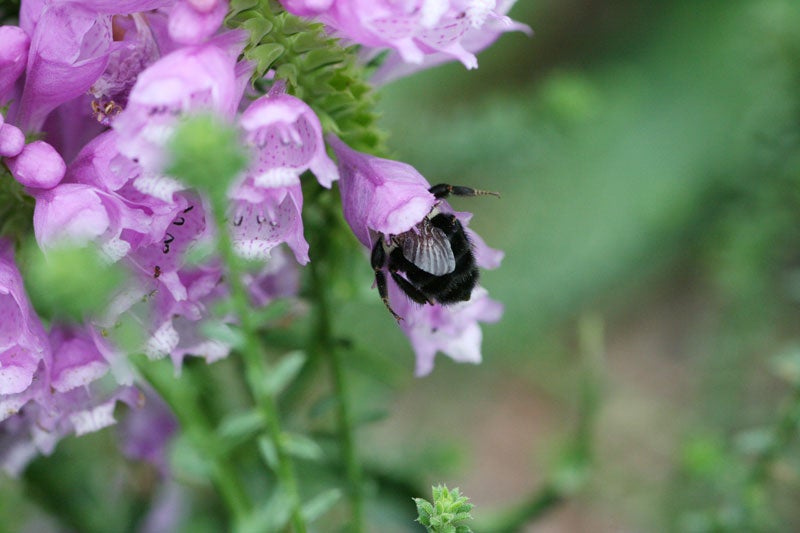Wildflower of the Month: Pollinators like Obedient Plant
Published 7:31 pm Tuesday, October 22, 2019

- The tubular flowers of Obedient Plant attract butterflies and hummingbirds. Bumblebees are the major pollinators and can often be seen attached to the underlip when the weather is cold, or in the evening. — Submitted Helen Hamilton
By Helen Hamilton
Obedient Plant
Physostegia virginiana
Obedient Plant produces spikes of rose-pink flowers that are striking against yellow goldenrods and the white asters of early fall. Although the flowers look like little snapdragons, the square stems identify this plant as a member of the mint family, and deer do not eat them.
The bud at the top continues to produce new blooms — “indeterminate florescence” as botanists call this pattern of floral production when the youngest flowers are at the top of the stem.
The common name is well deserved — when a blossom is pushed right or left it stays that way, because of friction between the flower stalk and the surrounding bracts. Children are amused by this seeming power over a flower. In nature this ability allows the blossoms to face away from a storm, providing an advantage for pollination since insects land against the wind.
The tubular flowers attract butterflies and hummingbirds. Each flower has five triangular lobes, two forming an upper lip and three as the lower lip. The flowers have open mouths that show guidelines of dots and fine lines for bees and butterflies to follow as they seek food. Bumblebees are the major pollinators and can often be seen attached to the underlip when the weather is cold, or in the evening. Painted Lady butterflies have been seen on the flowers in late October. Obedient Plant flowers are long-bloomers, from August through November.
This plant can be aggressive — it spreads by long stems, either above ground (stolons) or below (rhizomes), and self-seeds. But the young seedlings can be pulled easily if they grow where unwanted. The leaves are distinctive, opposite and sessile on the stem, lance-shaped with widely spaced teeth that have sharp points — few plants have this appearance.
This native wildflower is easy to grow, in sun, shade or part shade and soils that are somewhat moist. To control the height of the 4-foot stems, they can be cut by 1/3 early in the season, and pruning will control a tendency to droop. The plant can tolerate both poor drainage and drought but grows best in full sun with humus-rich soils.
Obedient Plant grows naturally in many counties across Virginia, and ranges over eastern U.S. and Canada, but is rare as a native occurrence in eastern Virginia. Another species, Swamp Obedient Plant (P. leptophylla) reaches only as far north as southernmost Virginia where it inhabits swamps and fresh to slightly brackish marshes.
A cultivar ‘Alba’ has white flowers and there is a variegated, pink-flowered form. Other forms are available in various shades of pink and rose, some growing less aggressively than the native species.
HELEN HAMILTON is past president of the John Clayton Chapter, Virginia Plant Society. For more information about native plants, visit www.vnps.org.





